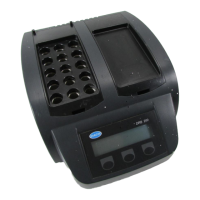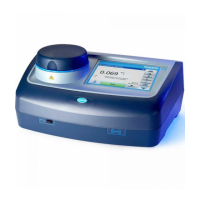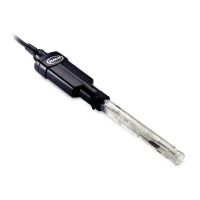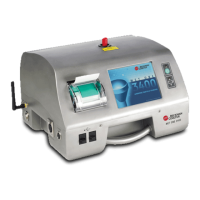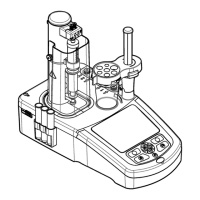24
Sulfuric acid (H
2
SO
4
) consumption depends on the anhydrous mass of
material and the chemical composition of the substance. Use of 4 mL
H
2
SO
4
is suitable for many materials, but not all. Therefore, the analyst
must pay attention to the amount of residual H
2
SO
4
for the type of sample
digested, and adjust the amount of acid or sample accordingly. Never use
less than 3 mL of concentrated sulfuric acid. Larger volumes of H
2
SO
4
may be used, but avoid a large excess since sample pH adjustment is
required in most subsequent determinations.
4.2.4 Carbonization Period
A carbonization period prior to the addition of hydrogen peroxide
provides a reducing environment which helps convert organic nitrogen to
ammonia. In the presence of oxidizable carbon compounds, sulfuric acid
reacts to produce sulfur dioxide, which is the active reducing agent.
The reaction is:
H
2
SO
4
→ H
2
O+SO
2
+½O
2
A preheat period of 2 to 5 minutes is recommended for routine digestions.
4.2.5 Adequate Peroxide Concentration for Sufficient Time
Researchers believe that hydrogen peroxide (H
2
O
2
) reacts immediately
with H
2
SO
4
at digestion temperature to give H
2
SO
5
(peroxymonosulfuric
acid) by the reaction:
H
2
SO
4
+H
2
O
2
→ H
2
SO
5
+H
2
O
This is an extremely powerful oxidizing agent toward carbonaceous
material. The objective is to maintain an adequate concentration of H
2
SO
5
in the hot digestion mixture for a long enough time to complete oxidation
of the carbonaceous material. The H
2
O
2
is metered into the flask at
3 mL/min. using the capillary funnel.
The amount of peroxide that must be added for complete digestion can be
determined by digesting a sample multiple times with incremental
increases in the amount of peroxide added (i.e., 5 mL, 10 mL, 15 mL, 20
mL).Resultsoftheanalysisfortheparameterofinterestmaythenbe
graphed to determine the minimum amount of peroxide needed for
optimum sample digestion.
The preferred and recommended peroxide reagent is 50% hydrogen
peroxide. Research studies have shown that the best recovery and
reproducibility are achieved using the 50% peroxide reagent. The 50%
hydrogen peroxide reagent produces dependable results in research and
actual applications. The optimal rate of peroxide addition has been
determined as 3 mL/minute using the 50% reagent. This may not hold
true if other strengths of hydrogen peroxide are used.
网址:www.mamots.com 电话:0431-85178766
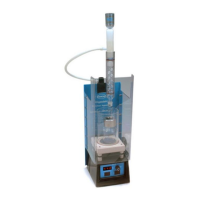
